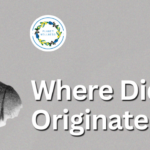Sclerology and Iridology
There are practices in the field of alternative medicine that stand out for their unique approach to comprehending the intricacies of the human body. Sclerology and Iridology are two such disciplines that use eye examinations to provide a complete view of health and wellbeing. In this blog, we explain their foundations, uses, and the benefits people derive from them.
Understanding Sclerology : The Essence
The sclera is the whites of the eyes. Information indicating areas of weakness can be found in the sclera. With thousands of nerve endings, blood vessels, muscles, and connective tissue, the sclera is a brain extension. The nervous system connects every organ to the iris and sclera. The spinal cord, optic nerve, and optic thalami are the pathways via which the nerve fibres receive their impulses.
Sclerology is the study of the whites of the eyes (sclera) to gain insight into a person’s health. According to this method, the sclera serves as a useful instrument for evaluating one’s health because it shows the internal state of the body.
Sclerology is a way to view a serious disease in progress, inflammation in the organs, and hereditary predispositions. Although it has some degree of complexity, it is an accurate method of evaluating health, and its fundamentals are not very difficult to learn. It contains significant tissue information pertaining to systemic pathology, making it useful to the practitioner or healer.
A Historical Journey
Sclerology is a historical art and science with an oral history dating back thousands of years. It is typically done in conjunction with an iridology examination and involves the study of the white part of the eye to determine the state of health of various body systems and organs.
The sclera was utilized by the Ancient Chinese, Greeks, and Native Americans to assess health. But it wasn’t until the 1960s that American researchers Dr. S. Wainwright and Dr. Jack Tipps began looking into material from the Nez Perce and Blackfoot Indians and separately continued their research into Sclerology. The first western map was created in 1968 by Dr. Wainwright. The second was created by Dr. Dory Detton in collaboration with a Blackfoot Native American doctor named Dr. Clarence Patrick Sundance Hathaway.
After that, Leonard Mehlmauer, ND, took up the cause and spent the last 25 years traveling the globe to learn more about and further the study of sclerology in many different countries, including Russia. We owe a debt of gratitude to him and his wife Nenita Sarmiento for their contributions to the field of Sclerology.
How Sclerology Works
Sclerology is centred on the study of the red lines, as well as other marks and colourings, that reflect actual conditions within the body. Their shape, size, and several other aspects of configurations and shading indicate how healthy they are.
Sclerologists examine the whites of the eyes for certain indicators. Red lines can signify an oncoming stroke, a red wash can represent cardiovascular disease, and forked lines can signify organ trauma.
Additionally, they search for signs that have been linked to tumors or cysts in the prostate, uterus, or colon. Stress lines running through the area of the eye that represents the breast are also significant. These would then prompt the Sclerologist to strongly advise their female customers to get mammograms.
Every part of the eye corresponds to every aspect of the body. The upper part, which affects sleeping patterns, might demonstrate vitality and pituitary gland health. The heart can be represented on the right side of the eye, and the lungs on the left.
Watch our short video to learn more about what Sclerology is.
Unveiling Iridology : The Essence of Iridology
Iridology is a holistic practice in which an iridologist examines a person’s eyes and analyzes what they observe to identify any potential ailments in the body.
The practitioner especially examines the iris (the coloured part of the eye) for any irregularities in pigmentation. A distinctive feature or pattern in the iris’s colour may point to the presence of a disease or other condition. The location of the feature or abnormality on the iris is used to determine the kind of disorder. An iridology chart is used for this.
The iridologist informs the person if an oddity is discovered during the examination. They might then begin to prepare for the treatment of the presumed condition.
Learn more about what Iridology is and how Ronald Delary-Simpson, Co-Founder of Planet Wellness and our resident Iridologist, got involved in it.
A Historical Journey
Ignatz Von Peczely, a Hungarian doctor, earned his medical degree from the Vienna Medical College in 1867. In the course of his medical practice, he had the opportunity to examine patients’ irises both before and after surgery. He meticulously documented his results and published them in a book titled “Discoveries in the Realms of Nature and the Art of Healing.” He created one of the earliest iris charts that related iris regions to the body’s organs.
Dr. Bernard Jensen is well known for creating one of the most widely used iris charts. His recovery from a medically ‘incurable’ ailment at the age of 18 and subsequent use of naturopathic treatments to treat it ignited his love for naturopathic treatments. He gave lectures in 55 countries while also writing more than 40 books on iridology and natural health care.
How Iridology Works
Iridologists complete their readings using a chart known as an iridology chart. A “map” of the irises in the left and right eyes is included on this type of chart. Each iris has 60 distinct sections, each of which corresponds to a different part of the body.
On the iridology chart’s right iris map, each organ and structure on the right side of the body correlates to a particular sector. The same is true for the left side of the body; each structure or organ there has a designated sector on the map of the left iris.
The iridologist examines a client’s eyes throughout the session to check for any irregularities in the pigmentation of both irises. Let’s say the bottom centre of the right iris has a discoloration or other oddity. The iridologist would specify which part of the body is listed in the corresponding section on the iridology chart. For instance, discolorations near the pupil may be a sign of issues with the digestive system, particularly the stomach and intestines.
The iridologist informs the client of the exact location of the problem after determining the condition or flaw. Herbs, supplements, and other natural remedies will be recommended to treat the condition.
The Benefits of Sclerology and Iridology
A holistic approach to health assessment is provided by sclerology and iridology. You can identify the underlying issues that may eventually manifest symptoms but have not yet done so. These non-invasive approaches also allow you to map out previously unknown weaknesses and predispositions to specific diseases. Due to their ability to identify problem areas and detect potential issues before they manifest. The combination of these two approaches provides a comprehensive view of your overall health. They can help you prevent future diseases and concentrate on the areas of your body that require particular attention.
In order to determine which parts of your body require support, the results of the iridology and sclerology examinations can be combined with some inquiries about your personal and family health history and current problems. With this knowledge, unique advice and a holistic dietary and nutrition program especially for you can be developed.
While many other treatments focus on diagnosing and treating patients based on symptoms, iridology and sclerology can assist in determining the root cause of disease. If a certain organ or region of the body needs support, certain foods, herbs, and exercises that can help your health return to balance can be recommended.
As the saying goes, “The eyes are windows to the soul.” In fact, the eyes also offer deep insights into a person’s health. Watch our video to learn more about how Iridology is the most powerful science to early health analysis for rapid noticeable health improvement, tissue rejuvenation, anti-aging and age reversal.
Conclusion
Sclerology and iridology are intriguing branches of alternative medicine that aim to provide a holistic perspective on health through the examination of the eyes. While they have their share of critics and controversies, many people find value in these practices for understanding their well-being. The allure of peering into the eyes for glimpses of one’s health continues to captivate those who seek alternative paths to well-being.
To learn more about Iridology, check out our other related blogs:
What Is Iridology and Sclerology?
What Does The White Of The Eyes Reveal About Your Health?
Can You See Illness In Your Eyes?
Health Insights Iridology Can Reveal
Where Did Iridology Originate?
NEXT STEPS
Book in a complimentary 15 minutes Zoom call with us (valued at £99) to enable us to clarify questions you may have on a specific health concern.




